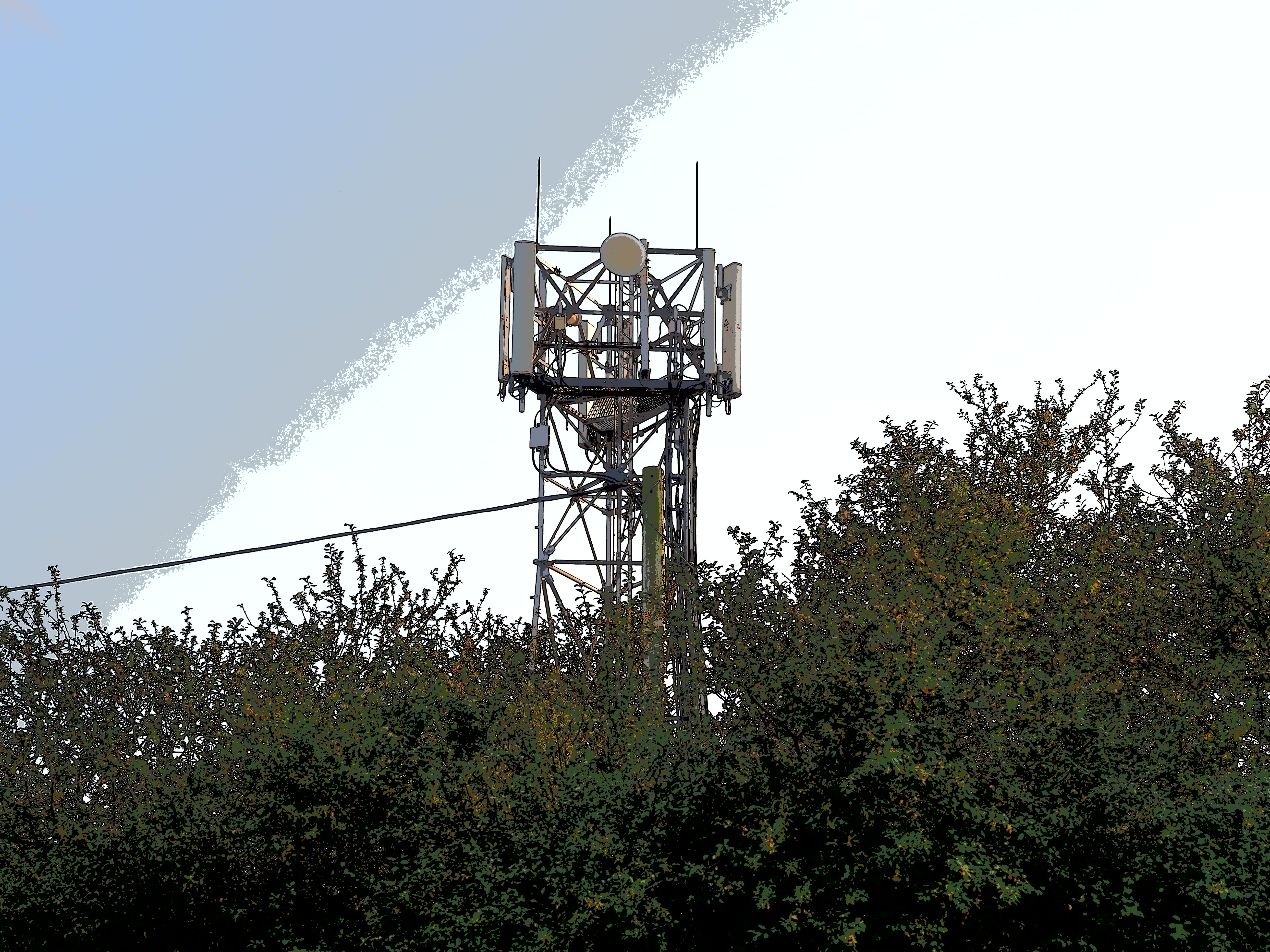5G: A Step Too Far?
We hear the new 5G network is coming. It will allow our phones and computers to work faster than with previous networks (3G, 4G). The regulating authority, the International Commission on Non-Ionising Radiation Protection (ICNIRP), has assured us it is completely safe. Surely this has to be a good thing. Better technology for all.
And yet a consensus of independent scientists believe that we are taking one of the biggest gambles with human health ever undertaken?
Let’s look at what we already know. Electromagnetic fields (EMFs) are classified by the WHO as possible carcinogens. This is because they are known to increase the rate of brain tumours, acoustic neuromas and thyroid cancers. But recent research is much more worrying: 38 studies have found EMFs cause cancer and 24 have found they damage DNA. Even low exposures of just 6 minutes a day can cause DNA fragmentation.
Mobile phones held close to the body cause cancer. There have been 33 cases of breast cancer in women who have kept their mobile phones in their bras. I suspect far greater numbers of males have developed prostate and testicular cancers from keeping mobiles in their trouser pockets. But this is an activity far less likely to be recorded.
But cancer is not the only concern. Research on EMFs have found they lower fertility (25 studies) and this change can be irreversible. EMFs cause neuropsychiatric effects (29 studies) and endocrine disruption (15 studies). But perhaps the biggest worry of all is their ability to cause early-onset dementia in rodents even at relatively low exposure. Scientists have found that the greater the exposure the higher the risk of dementia.
Yet another problem is they can trigger life-threatening changes in heart rhythm (9 studies). Rodents have dropped dead after being exposed to EMFs.
The problem is that EMFs damage basic cellular mechanisms. And 5G is far more of a concern because the more information a network carries the more dangerous it is. More information means faster and bigger pulses. The pulses from these beams happen continuously in nanoseconds bursts (a nanosecond is a thousand millionth of a second). These are 7 million times stronger than the body’s own electrical discharges.
To bring 5G into operation would mean having a staggering 500 base stations every square kilometre. To do this everyone would be subjected to a massive increase in exposure with no right to informed consent. Large numbers of people would be exposed to potentially lethal hotspots where two beams cross (which is like using targeted areas in radiotherapy).
Children and the foetus as always are on the sharp end when it comes to toxicity. They are far more susceptible to EMFs (a 5 year old absorbs 60% more radiation than an adult). EMFs are known to damage brain development in rodents. This is why wifi is not allowed in schools in some countries like France.
To get better reception the whole population, whether they like it or not, will be exposed to these new more toxic EMFs which will be impossible to avoid. They come with an increased risk of cancer, a greater chance of serious heart rhythm disturbances, a higher risk of dementia and infertility.
I believe anyone recovering from cancer unlucky enough to live in the path of one of these beams (and this would be many, many people) would have a massively reduced chance of recovery.
But it’s not just the threat of lethal disease that we need to worry about. EMFs are known to increase depression and insomnia and these can substantially impair our quality of life.
You might well ask why the ICNIRP have decided to forge ahead with 5G when the scientific evidence of harm is now indisputable. Some have noted their close ties with the phone industry and others have noted that they have only one doctor on the board. Independent experts have been appalled by the way solid scientific evidence has been cynically ignored and because of this 250 independent scientists have written to the EU calling for a moratorium on 5G.
But it’s not human health we need to be concerned about; we are taking a massive risk with the planet and the environment. To install 5G would increase electricity usage by 20%, significantly increasing the threat of global warming. EMFs are particularly hazardous to insects, now already under serious threat. Plants and trees are also affected, becoming more flammable. No species will be immune to this all-pervasive threat.
If we are foolish enough to allow 5G, can we protect ourselves?
For the individual, the answer is to reduce our total exposure to EMFs. The most dangerous forms of EMFs undoubtedly come from smart phones but these are not the only hazards. Unfortunately the smarter the phone the greater the risk to health.
It makes total sense to reduce exposure to all forms of EMF. Switch wifi off at night or better still use a wired system. Keep mobiles out of the bedroom as, even on standby, they give off continuous EMFs. Don’t charge mobiles at night whilst sleeping because of the very high levels of EMFs given off.
Never let anyone persuade you to have a smart meter (which gives off continuous EMFs). Avoid DECT phones which give off EMFs from the phone and base station (use analogue or ECO-DECT-plus phones instead).
But how can we make smart phones safer as these are the biggest concern? By the far the most important change is to switch the wifi mode off whenever possible (use settings on the phone). This will stop the continuous discharge of trillions of nanosecond pulses (which happen whenever the phone is on standby) which are so destructive to our biochemistry. This will confine exposure to the times of calls. Keep phones away from the body. Use call-forwarding to a landline where possible.
Even when making a call the EMF hit to the brain and surrounding areas is considerable. It can be 100 times higher before contact so keep the phone at a distance until contact is made. Exposure can be 1000 times higher in areas of poor reception. Exposure is far greater when using from a phone from a car or train. The simples t thing to do is to use your mobile phone on speaker mode but another option is to use an air-tube headset. But the most important factor when making a call is to keep the call length as short as possible.
To sum up: the potential downsides of 5G to the future of human health and to the welfare of the planet are almost too serious to contemplate. And yet the advantages are trivial. This is a risk we cannot afford to take.





